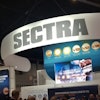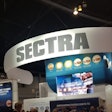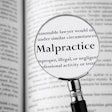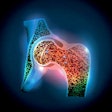
The U.K. Royal College of Radiologists (RCR) has released detailed guidance on the technical requirements for radiologists and industry to facilitate and improve connectivity and also simplify submission of anonymized, annotated cases between a PACS and a digital archive.
Currently, if a radiologist wants to contribute teaching cases to any national/regional teaching archive, the process is laborious at a time when a radiologist's spare time is particularly scarce, noted the authors of the 14-page document. Breaking down the technological barriers to contributing imaging studies directly from a PACS viewer to a teaching archive or a research database would make teaching and research much more efficient, they explained.
There are two fundamental requirements for setting up a successful teaching and training archive: ease of use and ease of contribution. Ease of use relates to the functionality of the archive, while ease of contribution relates to the ability of the local PACS to anonymize data and seamlessly connect with other archives, regardless of vendor, the authors noted.
The key criteria for ease of use are listed below:
- Ability to organize the archive into personal and shared folders
- Search and display functionality within the archive
- Exporting/migrating/sharing teaching cases from one archive to another and also to programs such as PowerPoint, email, social media, and other applications
- End of contract teaching archive data migration
The following are the main criteria for ease of contribution:
- Seamless connection between any vendor's PACS to a regional or national teaching or research archive
- Ability to undertake complete anonymization/deidentification by the sending institution, particularly cognizant to the requirements for treatment of personal data under the General Data Protection Regulation (GDPR) and other similar legislation
Archives of yesteryear
In her foreword to the report, Dr. Caroline Rubin, RCR's vice president of clinical radiology, reflected on how image archives were established in the past.
 Dr. Caroline Rubin, RCR's vice president of clinical radiology.
Dr. Caroline Rubin, RCR's vice president of clinical radiology."Nostalgic for the 'good old days' when radiologists collected diagnostic gems for teaching purposes and then handed on their film collection for posterity?" she asked.
"Readily anonymized, easily portable to different locations and of variable quality and preservation, these collections were often accompanied by a distinctive aroma but supported the training and assessment of many generations of trainee radiologists, medical students, and colleagues," recalled Rubin, who is a consultant radiologist at University Hospital Southampton National Health Service Trust and director of the combined Southampton and Salisbury and Isle of Wight breast imaging units.
Easy access to PACS images is essential for developing teaching archives on local systems, but it does not facilitate networked regional or national teaching, network or national discussion of discrepancies or excellent diagnoses of anonymized cases at regular learning meetings, or the submission of deidentified images for teaching or research purposes, she noted.
Rubin acknowledged the hard work of the document's lead author, Dr. Neelam Dugar, a consultant radiologist at the Doncaster & Bassetlaw Hospitals NHS Trust and AuntMinnieEurope.com's informatics columnist, as well as the contribution of members of the RCR's Radiology Informatics Committee.
Download the new guidelines free of charge from the RCR website.



















